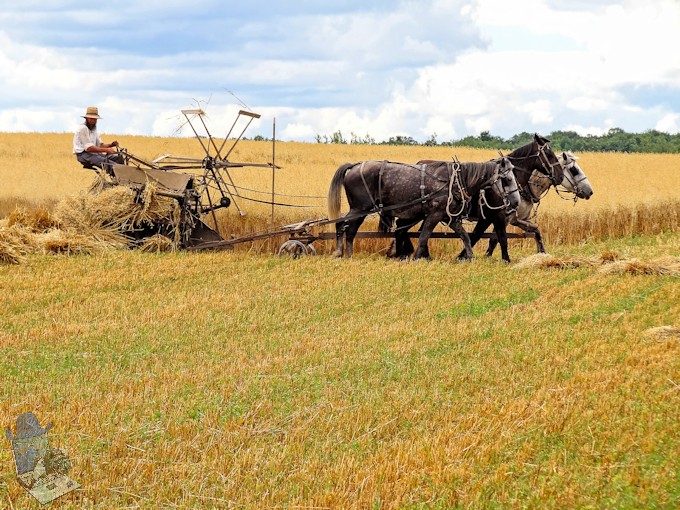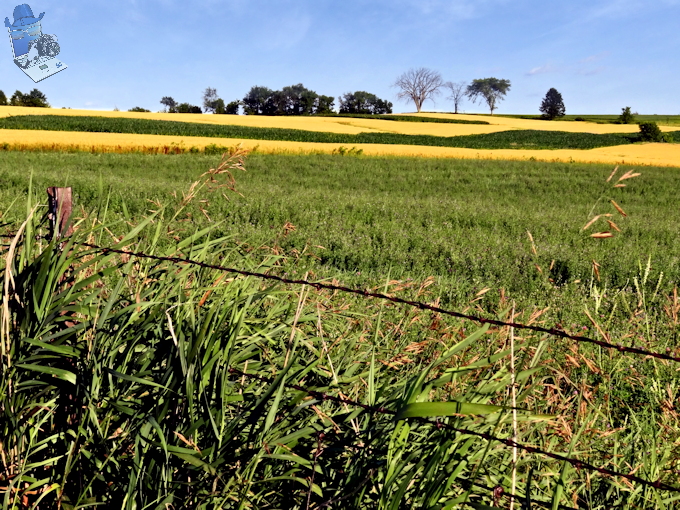The wheat and oats are ripening and you can see combines in the fields but once in a while you can see an image from the past.
Typically, grain binders, invented in 1872, were most common in the humid Midwest where the grain dried unevenly, and it was necessary to have additional drying before it was threshed. Early grain binders were all ground-driven and pulled by a team of horses around the field. As the horses pulled the grain binder forward, the driving wheel was rotated, which powered the sickle and reel of the grain binder. As the reel rotated, it bent the grain stalks inward towards the sickle, and the sickle cut the grain stalks off a few inches above the ground. A cloth canvas then conveyed the grain to a gear driven knotter which tied several stalks together into a small bundle. After the grain bundle was tied, it slid onto the bundle carrier, and was dropped onto the field. Following close behind, field workers picked up the tied grain bundles and placed several of them together to form a small shock. The grain bundles were placed in shocks so that the unripened grain would have a chance to dry, and so that they would easily shed water if they were rained on.
Grain Binder





